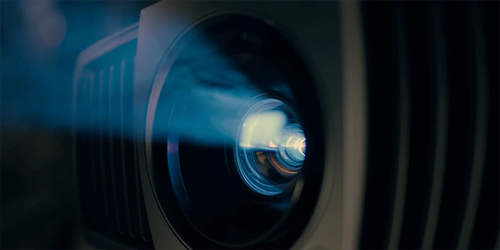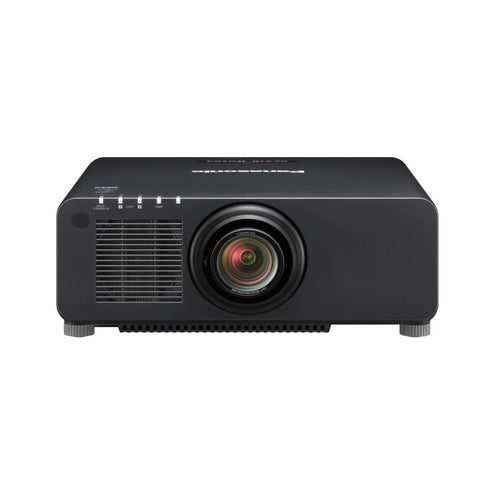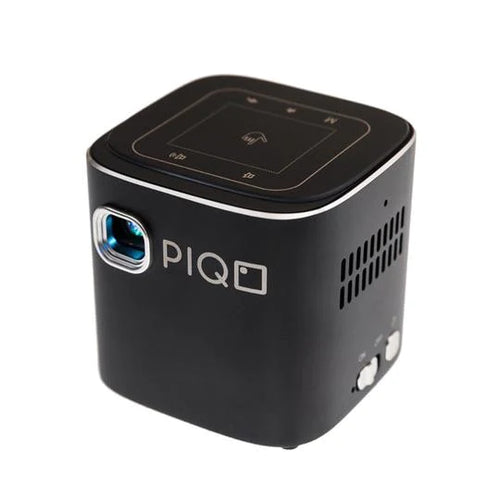Lumens vs ANSI Lumens: Which Measurement Should You Trust for Your Next Projector

When choosing a projector, understanding the brightness levels is crucial for ensuring optimal viewing quality.
Two common measurements you'll encounter are lumens and ANSI lumens. This article delves into these metrics, explaining their differences and significance in selecting the right projector.
Knowing which to trust can dramatically affect your purchasing decisions. It is important to ensure that you pick a device that meets your needs in various environments and lighting conditions.
What Are Lumens?
Lumens are a unit of measurement used to quantify the amount of light emitted by a source, such as a portable projector. Understanding lumens is essential because they directly impact the perceived brightness of the projector.
The higher the lumens rating, the brighter the projector can appear. This measure is crucial when choosing a portable projector, as it affects visibility and clarity, especially in various lighting conditions.
However, not all lumens measurements are created equal, making it necessary to distinguish them from ANSI lumens for more accurate assessments.
How Do They Measure Light Output?
Lumens measure the total amount of visible light emitted by a source, such as a projector. An integrating sphere is often used to determine a projector's lumens output.
This instrument captures and measures all the light emitted by the projector lamp, providing a comprehensive reading of the light output.
The process involves projecting light into the sphere, which is coated inside with a diffuse white reflective coating to ensure that light is uniformly scattered in all directions.
Sensors inside the sphere then measure the scattered light, providing a lumens rating that indicates the projector's brightness. This measurement helps to gauge how well the projector will perform in different environments, from dark rooms to spaces with ambient light.
Exploring ANSI Lumens
When diving into the world of projectors, you'll often come across two brightness metrics: lumens and ANSI lumens. But what exactly are ANSI lumens, and how do they stand out from the standard lumen measurements?
Let's explore this more accurate and reliable metric to help you choose the best portable projector, especially if you're eyeing that stellar 1080p resolution!
What Makes ANSI Lumens Different?
ANSI lumens, short for American National Standards Institute lumens, are a standardized method for measuring projector brightness.
Unlike regular lumens, which can vary based on the manufacturer's measurement approach, ANSI lumens offer a consistent and comparable way to assess brightness across all brands and models.
This makes it much easier to compare the proper brightness of different projectors, ensuring that your new 1080p projector shines bright and true.
The ANSI Standard: How It's Measured
The measurement of ANSI lumens is not just about turning on a projector and noting the brightness. It involves a precise, standardized testing environment that mirrors typical viewing conditions. Here's how it's done.
- Test Pattern: A standard checkerboard pattern of white and black squares is projected.
- Multiple Points: Brightness measurements are taken from several specific points on the projected image.
- Controlled Environment: The testing is conducted in a controlled lighting environment to ensure accuracy and repeatability.
This rigorous testing ensures that the ANSI lumens rating reflects what you can expect in a typical viewing scenario, not just under ideal laboratory conditions.
Why Trust ANSI Lumens?
The benefits of using ANSI lumens as your go-to measurement for projector brightness are clear, especially when you're in the market for a high-quality 1080p projector. Here's why.
Accuracy
ANSI lumens provide a more accurate representation of projector brightness, helping you avoid the guesswork associated with non-standardized lumens ratings.
Comparability
Since all manufacturers use the same standard, it's easier to compare different projectors. You'll know exactly how bright one projector is relative to another, ensuring you get the best one for your needs.
Confidence in Purchase
With ANSI lumens, you can be more confident in your purchase, knowing that the projector will perform as expected in your chosen environment, whether it's for a home cinema or a professional presentation.
Embracing ANSI lumens means adopting a more reliable standard that guides you toward the best possible choice for your next portable or 1080p projector. It's about making an informed decision where what you see in the specs matches what you get in reality—bright, clear, and compelling visual experiences.
Comparative Analysis: Lumens vs ANSI Lumens in Practical Scenarios
When selecting a projector, whether it's a compact portable model or a high-resolution 1080p projector, understanding the difference between lumens and ANSI lumens is crucial.
This comparative analysis will explore how these two measurements perform under various practical conditions, using hypothetical examples and considering the influence of different projector technologies such as DLP, LCD, and LED.
Scenario 1: Home Theater in a Dark Room
Imagine you are setting up a home theater with a 1080p projector. You can choose between two models: one rated at 3000 lumens and another at 3000 ANSI lumens.
- Regular Lumens: The projector with 3000 lumens might initially seem adequate for a dark room. However, this measurement could be based on the brightest point of the image, not representing the overall brightness.
- ANSI Lumens: The projector with 3000 ANSI lumens provides a more accurate and uniform brightness across the entire image, ensuring that all scenes, regardless of their inherent brightness or color, are vivid and clear.
Impact on viewer experience: In a dark room, the uniform brightness of ANSI lumens ensures that all details are visible, from dark shadows in a horror movie to brightly lit scenes in a drama, enhancing the overall cinematic experience.
Scenario 2: Business Presentations in Well-Lit Rooms
Consider a business professional who frequently presents in well-lit conference rooms and needs a portable projector that can handle ambient light.
- Regular Lumens: A projector boasting a high lumen count might perform well when displaying very bright images but can wash out during darker slides or videos, making details hard to see.
- ANSI Lumens: A projector with an ANSI lumens rating will maintain consistent brightness across all types of content, ensuring that graphs, videos, and text are equally clear, even in a bright room.
Impact on professional settings: The reliability of ANSI lumens in various lighting conditions means that presentations will maintain visual quality, thus supporting better engagement and communication during meetings.
Scenario 3: Outdoor Movie Nights
Hosting an outdoor movie night requires a projector that can adapt to changing ambient lighting, such as at dusk.
- Regular Lumens: A projector with an inflated lumens rating might initially provide a bright image but could diminish in quality as ambient light changes.
- ANSI Lumens: A projector rated with ANSI lumens will offer a consistent light output that adapts more effectively to the gradual dimming of the environment as night falls.
Impact on outdoor viewing: ANSI lumens preserve the movie's visibility and color integrity, providing a superior viewing experience throughout the event.
Influence of Projector Technology
The technology underpinning a projector plays a significant role in how both lumens and ANSI lumens are perceived and measured, influencing the choice depending on the specific application or environment. Here's a more detailed look at how different technologies—DLP, LCD, and LED—affect these measurements.
DLP (Digital Light Processing)
DLP projectors are mainly known for their higher contrast ratios, which allow them to produce sharper and more detailed images. This technology uses a chip made of thousands of tiny mirrors, each reflecting light to create the image.
Because of the high contrast, DLP projectors can deliver clearer images even with lower ANSI lumen ratings, making them particularly suitable for environments with controlled lighting.
This means in darker settings, such as home theaters or dim conference rooms, a DLP projector with a modest ANSI lumen output can still provide a vibrant, sharp viewing experience without the necessity for overwhelming brightness.
LCD (Liquid Crystal Display)
LCD projectors operate by passing light through liquid crystal panels to create the image, a method that generally results in higher brightness levels. This characteristic makes LCD projectors ideal for scenarios with significant ambient light, such as classrooms or conference spaces with many windows.
The lumens and ANSI lumens ratings for LCD projectors tend to reflect higher outputs, which helps maintain the visibility and clarity of the projection in brightly lit conditions. Thus, LCD technology offers a clear advantage for applications where natural or artificial light is prevalent, ensuring that presentations and videos remain clear and vivid.
LED (Light Emitting Diode)
LED projectors use light-emitting diodes, which provide excellent color accuracy and consume less power compared to DLP and LCD projectors.
While LED projectors excel in color fidelity and operational efficiency, they typically do not achieve the same level of brightness as their counterparts. This makes their ANSI lumens rating a critical factor for consumers to consider.
Since the brightness capabilities might be lower, understanding the ANSI lumens measurement is vital to gauge how the projector will perform in various ambient light settings.
LED projectors are especially suitable for users who prioritize color precision and energy efficiency over sheer brightness, such as in art exhibitions or digital signage where color expression is crucial.
Lumens vs ANSI Lumens: Which One Is Better?
Choosing between lumens and ANSI lumens largely depends on the need for accuracy and consistency in projector brightness.
ANSI lumens, measured under a standardized method approved by the American National Standards Institute, offer a more reliable and comparable indication of projector brightness across different models and brands.
This uniformity makes ANSI lumens the preferred choice for professionals and consumers who require a clear understanding of how a projector will perform in real world conditions.
In contrast, standard lumens measurements can vary depending on the manufacturer's methodology and might not provide a consistent basis for comparison.
Top 5 Projectors Ranked by Lumens for Superior Brightness
Here are five highly regarded projectors with ANSI lumens ratings, offering superior brightness for a variety of settings. Here's a concise overview of the best picks.
|
Projector |
Lumen |
Resolution |
Feature |
Buy Here |
|
PIQO |
200 ANSI Lumens |
1080p HD |
Highly portable projector |
|
|
Epson Pro EX9240 |
4000 ANSI Lumens |
1080p HD |
Exceptional clarity |
|
|
BenQ TK850 |
3000 Lumens |
4K UHD |
Exceptional brightness |
|
|
Optoma EH412 |
4500 ANSI Lumens |
1080p HDR |
Superior visibility |
|
|
LG PF50KA |
600 ANSI Lumens |
1080p |
Cinema-quality performance |
Let us look into the details.
PIQO HD Projector

When deciding on a measurement to trust for your next projector, the PIQO HD projector presents a compelling case for relying on ANSI lumens.
Rated at 200 ANSI lumens, it offers a trustworthy indication of brightness, ensuring that the projected image will be clear and vibrant, even in the subtly lit environments typical of bedrooms.
This clarity is critical when comparing projectors, as ANSI lumens provide a standardized measure, making it a more reliable metric than non-standard lumens.
With its robust feature set tailored for bedroom use—such as automatic Keystone Angle Correction, extensive connectivity options including Bluetooth and Wi-Fi, and a 1080p resolution—the PIQO excels in providing a superior viewing experience in intimate settings.
Thus, for those prioritizing accurate brightness and high functionality in a compact design, the PIQO's reliance on ANSI lumens as a measurement is indeed trustworthy for selecting your next projector.
Pros
- Ultra-portable and lightweight
- Broad compatibility
- Touch control
- Expansive high-resolution display
- Quality built-in speakers
Cons
- Battery life caps at 5 hours for video.
- Doesn't have a microSD card slot.
Epson Pro EX9240

The Epson Pro EX9240 stands out as a top-tier choice for those needing a projector capable of delivering exceptional clarity and color in bright settings.
With its impressive 4,000 ANSI lumens, this model excels as both the best camping projector and a robust portable projector for professional use.
The high lumens rating ensures that images remain vibrant and visible, even in well-lit conditions, making it versatile for both outdoor adventures and business presentations.
This projector delivers 4,000 ANSI lumens, which is ideal for well-lit rooms and professional settings. It is known for its vivid color accuracy and high brightness.
Pros
- High brightness
- Vivid color accuracy
- Portable projector
Cons
- Higher cost
- Bulkier size
BenQ TK850

The BenQ TK850 not only offers exceptional brightness but also features advanced image technology that enhances color accuracy and detail, making every scene pop with realism.
Its sports mode particularly enhances audiovisual features to catch every moment in stunning clarity, perfect for live-action excitement.
Its compact design and easy setup make it highly suitable for quick transitions between different viewing contexts, from cozy movie nights at home to lively gatherings around a campfire.
This makes the TK850 an all-around excellent choice for those who demand versatility and quality in their viewing experiences.
Pros
- Bright 3,000 lumens
- HD image quality
- Portable
Cons
- Higher price
- Moderate weight
Optoma EH412

The Optoma EH412 excels as a portable projector, making it highly effective for both professional settings and educational environments.
With 4,500 ANSI lumens, it shines brightly in the debate of lumens vs ANSI lumens, offering superior visibility and clarity even in well-lit areas.
This high level of brightness ensures that presentations and educational content are displayed with crisp, clear visuals, which is essential for maintaining audience engagement.
Compact and powerful, the EH412 is designed to deliver high-quality presentations wherever needed. This projector is ideal for those requiring a reliable, high-lumen device for diverse and demanding environments.
Pros
- Exceptional brightness
- Clear visuals
- Portable
Cons
- Higher energy use
- Bulkier design
LG PF50KA

The LG PF50KA is an ideal portable projector, balancing its compact form with a robust 600 ANSI lumens brightness.
In the lumens vs ANSI lumens debate, this projector demonstrates the practicality of having a reliable ANSI lumens rating, ensuring that its light output is effectively measured for consistency and accuracy.
This makes it particularly suitable for mobile professionals who need to give presentations in various ambient light settings and for outdoor movie enthusiasts looking for cinema-quality performances under the stars.
Despite its smaller size, the LG PF50KA does not compromise on features. It offers full HD resolution and a built-in battery, allowing for easy setup and operation without the need for a continuous power supply.
Its LED light source provides a long lifespan and consistent brightness throughout its usage. This projector is genuinely designed for on-the-go presentations and entertainment, offering both mobility and quality in one device.
Pros
- Battery-powered
- Compact
- Lightweight
- Full HD resolution
Cons
- Limited brightness
- Shorter battery life
Final Thoughts
Understanding the difference between lumens and ANSI lumens is crucial when selecting a projector. ANSI lumens provide a standardized, reliable measurement of brightness, ensuring consistency across different brands and models.
This makes them particularly valuable for comparing projectors effectively. When evaluating projector specifications, consider the ANSI lumens rating to gauge actual brightness, especially if you need clarity in various lighting conditions.
Assess the projector's resolution, connectivity options, and portability to ensure it meets your specific needs, whether for professional presentations, home theaters, or outdoor movie nights. You can choose a projector that best fits your requirements by prioritizing these factors.







